Do Essential Oils Hurt Cats
Essential oils have become increasingly popular for their therapeutic benefits. However, when using them around pets, particularly cats, caution is essential.
We will explore essential oils, their types, common uses, and most importantly, their safety for our feline friends.
Additionally, we will discuss the risks of using essential oils on cats, signs of toxicity, and safe practices when using them around our beloved pets.
Dive in to learn more about essential oils and their impact on our furry companions.
Key Takeaways:
What Are Essential Oils?
Essential oils are highly concentrated plant extracts that retain the natural aroma and flavor of their source. They are commonly used in aromatherapy, skincare, and cleaning products due to their therapeutic properties and pleasant scents.
These oils are extracted through various methods such as steam distillation, cold pressing, or solvent extraction, depending on the plant and its chemical composition. Each essential oil offers unique benefits; for example, lavender oil is known for its calming effects, while tea tree oil has antimicrobial properties.
Along with their aromatic uses, essential oils can also be utilized topically for skincare purposes. It is crucial to dilute them properly to avoid skin irritation or reactions, especially for individuals with sensitive skin.
What Are The Different Types Of Essential Oils?
The different types of essential oils range from floral scents like Lavender to invigorating scents like Eucalyptus and herbaceous scents like Rosemary and Cedarwood.
Each type of essential oil possesses unique properties and benefits.
- Lavender oil is known for its calming and soothing effects, making it ideal for relaxation and promoting sleep. It also has anti-inflammatory properties.
- Eucalyptus oil is commonly used for its refreshing and invigorating scent. It is great for clearing congestion and relieving respiratory issues.
- Rosemary oil is often used for improving focus and concentration. It can also stimulate hair growth and improve scalp health.
- Cedarwood oil has a woody aroma and is popular for its calming and grounding properties. It is often used in aromatherapy for its relaxation benefits.
How Are Essential Oils Used?
Essential oils can be used through diffusion in diffusers, topical application on the skin, or even ingestion in some cases, although this should be done under expert supervision.
Using a diffuser is one of the most popular methods to enjoy the therapeutic benefits of essential oils in a room. There are various types of diffusers available, including ultrasonic, nebulizing, heat, and evaporative diffusers, each with its unique way of dispersing the oil into the air.
When applying essential oils topically, it is essential to dilute them with a carrier oil to prevent skin irritation or reactions. The typical dilution ratio is 1-2% for adults, with even lower concentrations for children and individuals with sensitive skin.
For those considering ingesting essential oils, it is crucial to note that not all oils are safe for consumption. Only certified pure oils from reputable sources should be used under the guidance of a qualified professional to ensure safety.
What Are The Common Uses Of Essential Oils?
Common uses of essential oils include aromatherapy for relaxation, skincare for various benefits, and in cleaning products for their antiseptic properties.
The applications of essential oils extend far beyond these common uses. In the wellness industry, essential oils are utilized in massage therapy to promote relaxation and alleviate muscle tension. In the beauty sector, these oils are incorporated into hair care products to nourish and strengthen the hair follicles. Essential oils play a significant role in household cleaning due to their natural disinfectant properties, making them a popular choice for eco-friendly cleaning solutions. Their versatility across different industries highlights the wide-ranging benefits of incorporating essential oils into daily routines.
Are Essential Oils Safe For Cats?
While essential oils have numerous benefits for humans, they can be toxic to cats due to their unique metabolic systems. It is crucial to exercise caution when using essential oils around feline companions.
When ingested or even inhaled, certain essential oils can pose serious health risks to cats, potentially leading to symptoms such as vomiting, diarrhea, difficulty breathing, drooling, and even liver damage. Cats lack certain liver enzymes necessary to metabolize essential oil compounds, making them particularly vulnerable to poisoning.
Preventative measures should be taken to safeguard your feline friends. Always store essential oils in a secure location inaccessible to curious pets, and never apply oils directly to your cat’s skin or fur without consulting a veterinarian. If you suspect your cat has been exposed to essential oils or is showing signs of toxicity, seek immediate veterinary care to prevent further complications.
What Are The Risks Of Using Essential Oils On Cats?
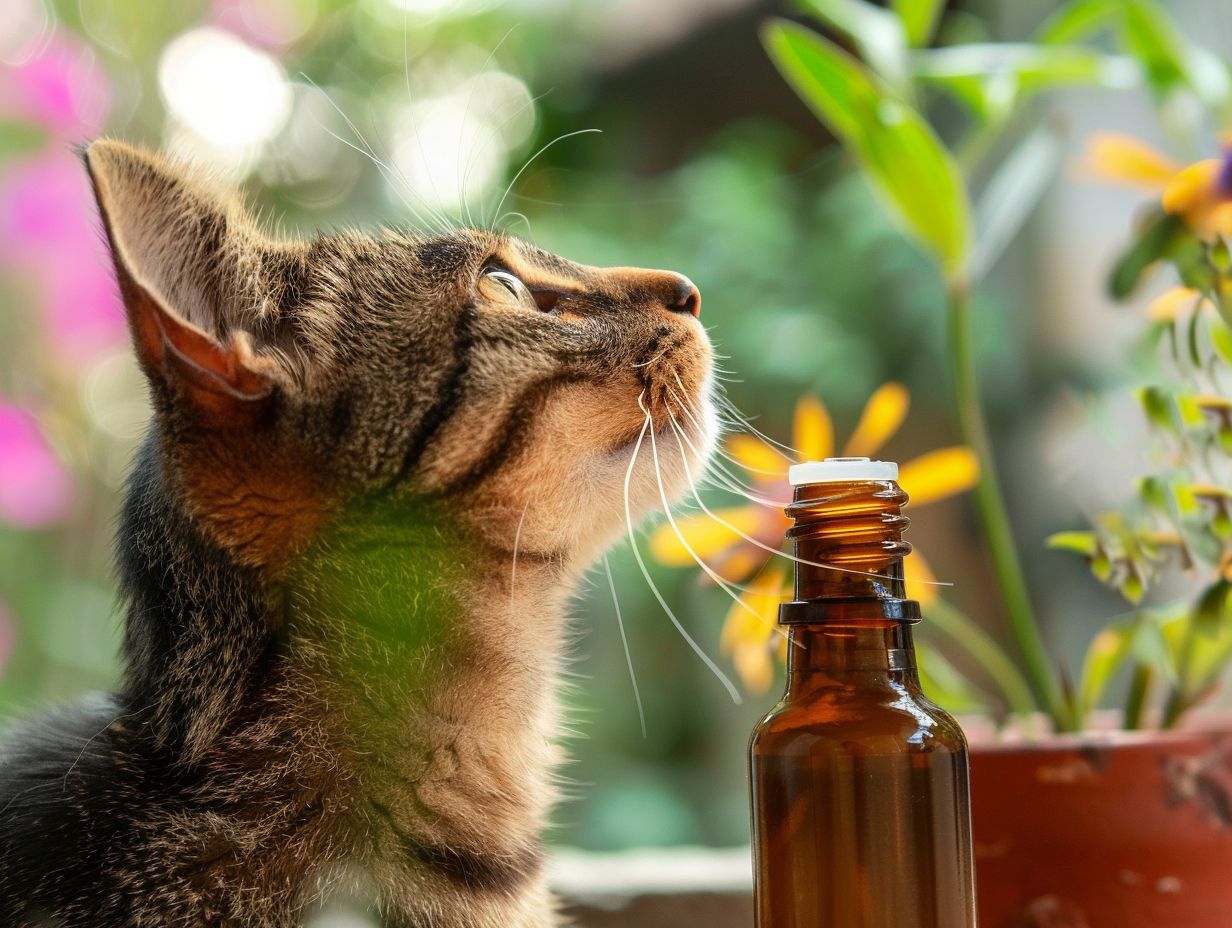
The risks of using essential oils on cats include poisoning through ingestion or skin contact, which can lead to severe health issues affecting their liver, kidneys, and overall well-being.
When essential oils come into contact with a cat’s skin, it can lead to irritation, redness, and potentially even chemical burns due to their delicate nature. Cats are particularly sensitive to certain components of essential oils, which can disrupt their respiratory system or trigger allergic reactions. Ingestion of essential oils by cats can result in symptoms such as vomiting, drooling, difficulty breathing, or even more severe complications like organ failure. It’s crucial to remember that what may be beneficial for humans can be toxic to our feline friends.
What Are The Signs Of Essential Oil Toxicity In Cats?
Signs of essential oil toxicity in cats may present as vomiting, diarrhea, respiratory issues, lethargy, or neurological symptoms, indicating a need for immediate veterinary attention.
It is crucial for pet owners to be aware of these potential symptoms and the dangers associated with essential oils when cats come into contact with them. Vomiting and diarrhea can lead to dehydration, while respiratory problems may indicate serious lung issues. Lethargy and neurological signs like tremors or seizures should never be overlooked as they could signal severe poisoning. Quick action is vital in these situations, as delaying treatment can worsen the cat’s condition and jeopardize its health.
What To Do If Your Cat Has Been Exposed To Essential Oils?
If your cat has been exposed to essential oils, contact your veterinarian immediately for guidance on potential poisoning symptoms and appropriate steps to mitigate the effects of ingestion.
When reaching out to your vet, it’s crucial to provide details such as the type of essential oil, the amount ingested, and the time of exposure.
In the meantime, keep a close eye on your feline friend for signs of distress, including vomiting, drooling, lethargy, or difficulty breathing.
If instructed by the vet, you may need to induce vomiting or administer activated charcoal to help absorb any remaining toxins in your cat’s system.
Remember, prompt action can make a significant difference in your cat’s recovery from essential oil poisoning.
How To Clean Essential Oils Off Of Your Cat?
Cleaning essential oils off your cat should be done with mild soap and water to prevent further skin irritation or ingestion of the oils.
When cleaning your feline friend, it’s crucial to opt for gentle cleaning methods to ensure their safety.
Remember to dilute the soap properly to avoid any potential reaction on their sensitive skin. It’s advisable to use lukewarm water to make the process more comfortable for your cat.
Take care not to scrub too hard, as this can cause unnecessary stress to your pet. After rinsing thoroughly, gently pat your cat dry with a soft towel to avoid any further discomfort.
It’s essential to prioritize their well-being during this cleaning process.
When To Seek Veterinary Care?
It is essential to seek veterinary care immediately if any symptoms of essential oil poisoning are noticed in a cat, as early intervention can prevent serious health complications.
Some common symptoms of essential oil poisoning in cats include drooling, vomiting, diarrhea, difficulty breathing, tremors, and weakness. If your cat exhibits any of these signs after exposure to essential oils, do not hesitate to contact a veterinarian without delay.
It’s crucial to remember that cats are particularly sensitive to essential oils, and even small amounts can be toxic to them. Ignoring the symptoms or delaying professional help can lead to severe repercussions on your cat’s health.
What Are Some Essential Oils That Are Safe For Cats?
Certain essential oils like Lavender and Cedarwood are considered safe for cats when used in diluted forms and under veterinary supervision.
Other cat-safe essential oils include Roman Chamomile, Frankincense, and Geranium. Roman Chamomile is known for its calming properties, which can help reduce stress and anxiety in cats. Frankincense has anti-inflammatory benefits and can support overall well-being in felines. Geranium is often used to repel fleas and ticks naturally.
When using these safe essential oils for cats, it is crucial to always dilute them properly in a carrier oil like coconut or olive oil before applying them on your cat. Only a few drops should be added to a diffuser or diluted in water for topical application.
Despite the benefits, there are potential risks associated with using essential oils around cats. Cats lack certain enzymes in their liver that help metabolize these oils, making them more susceptible to toxicity. Symptoms of essential oil poisoning in cats include vomiting, drooling, and difficulty breathing.
Lavender Essential Oil
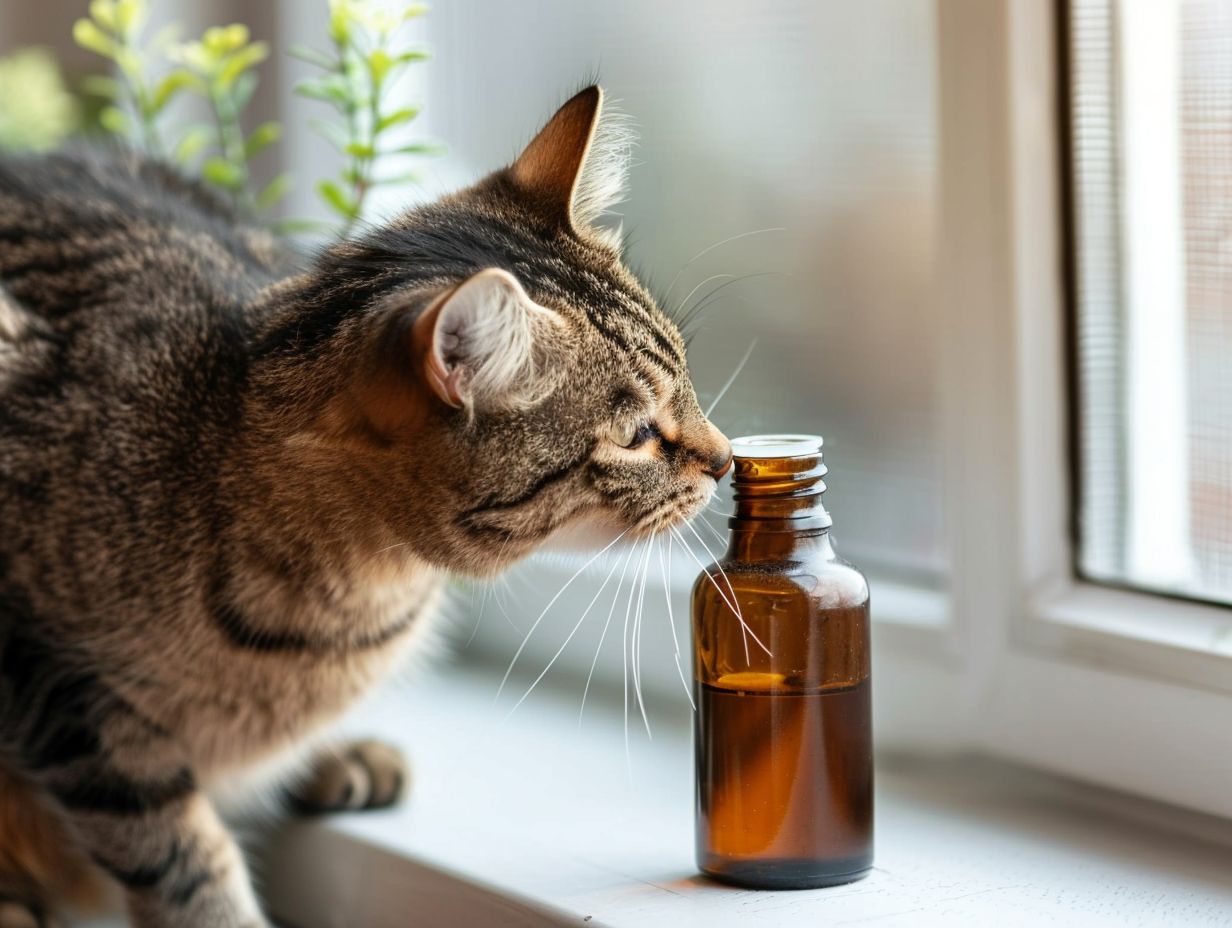
Lavender essential oil is known for its calming properties and can be safely used on cats to reduce anxiety or stress under proper dilution and supervision.
When diffused in the air or applied topically with caution, Lavender essential oil can help relax feline companions during stressful situations such as vet visits or travel. The gentle floral scent can promote a sense of tranquility and aid in creating a soothing environment for your pet. Remember to always consult your veterinarian before using essential oils on your cat, as some products may not be suitable for all pets due to individual sensitivities.
Frankincense Essential Oil
Frankincense essential oil is considered safe for cats and can offer various health benefits such as immune support and relaxation when used appropriately.
One of the key advantages of Frankincense essential oil is its ability to help reduce stress and anxiety in cats. The calming properties of this oil can be particularly beneficial for feline companions who may experience fear or nervousness during car rides, vet visits, or thunderstorms. Additionally, Frankincense oil is known for its anti-inflammatory properties, which can aid in soothing conditions like arthritis and respiratory issues in cats.
Cedarwood Essential Oil
Cedarwood essential oil is often used as a natural flea repellent for cats and can provide a safe and effective alternative to chemical treatments when diluted and applied correctly.
Due to its insect-repelling properties, Cedarwood essential oil helps deter fleas from infesting your feline companions, making it a popular choice among cat owners seeking natural solutions. Not only does it fight off pesky parasites, but Cedarwood oil also has calming effects that can aid in reducing stress and anxiety in cats, promoting overall well-being and a harmonious environment.
In terms of dilution, it is crucial to follow recommended guidelines to ensure the safety of your furry friends. Mixing Cedarwood oil with a carrier oil like coconut or olive oil in appropriate ratios is essential to prevent skin irritations or sensitivities.
Lemongrass Essential Oil
Lemongrass essential oil is known for its insect repellent properties and can be used to deter pests in a safe and natural manner when diluted appropriately for cats.
Not only does lemongrass essential oil help in repelling insects like fleas, ticks, and mosquitoes, but it also has calming properties that can aid in reducing stress and anxiety in felines. When diffused or applied topically in a diluted form, this essential oil can create a pleasant and soothing environment for your cat.
It’s important to remember that cats are more sensitive to essential oils than other animals, so always ensure proper dilution and consult with a veterinarian before using any essential oil on your furry friend.
How To Use Essential Oils Safely Around Cats?
Using essential oils safely around cats involves proper dilution, avoiding direct skin contact, and ensuring adequate ventilation when diffusing oils in the home.
It’s crucial to always store essential oils in a secure location out of reach of curious felines, as ingestion can be harmful to their health. Make sure to consult with a veterinarian before using any essential oils around your cat, especially if they have underlying health conditions or are pregnant.
When diffusing oils, keep your cat’s preferences in mind; if they show signs of discomfort, like excessive sneezing or drooling, discontinue use immediately. Consider using a diffuser that has a timer or intermittent setting to control the exposure levels for your cat’s safety.
What Precautions Should Be Taken When Using Essential Oils Around Cats?
When using essential oils around cats, it is crucial to store them securely, avoid direct ingestion by pets, and consider alternative diffusion methods like reed diffusers or plugin diffusers to minimize risks.
Proper storage is key to prevent accidental spills or leaks that could expose curious cats to concentrated essential oils. Keeping oils in a secured cabinet or on high shelves inaccessible to pets is advisable.
Be vigilant about preventing cats from licking or directly consuming essential oils. Even a small amount ingested can be harmful to their sensitive respiratory and digestive systems. Is vanilla oils safe for cats?
Opting for diffusers that emit oils more subtly into the air, such as reed diffusers or plugin diffusers, can help reduce the intensity of exposure for feline companions.
Frequently Asked Questions
Do essential oils hurt cats?
Yes, some essential oils can be toxic to cats if ingested or absorbed through their skin. Cats are unable to metabolize certain compounds found in essential oils, leading to potential poisoning and health issues.
Which essential oils are harmful to cats?
Common essential oils that can be harmful to cats include tea tree, eucalyptus, peppermint, citrus, cinnamon, and wintergreen. These oils contain compounds that are toxic to cats and can cause serious health problems.
How do essential oils affect cats?
Essential oils can affect cats in various ways, including skin irritation, respiratory issues, digestive problems, and neurological symptoms. Cats may also experience lethargy, vomiting, and difficulty breathing if exposed to toxic essential oils.
Can essential oils be used safely around cats?
Yes, there are some essential oils that can be used safely around cats. These include lavender, chamomile, and frankincense. However, it is always best to consult with a veterinarian before using any essential oils around your cat.
What should I do if my cat is exposed to essential oils?
If your cat has been exposed to essential oils, it is important to act quickly. If the oil is on their skin, wash it off immediately with soap and water. If ingested, seek veterinary help immediately. Monitor your cat for any symptoms and contact your veterinarian for further guidance.
Are there any alternatives to essential oils for my cat?
Yes, there are many natural alternatives to essential oils that can be safely used around cats. These include herbs, such as catnip and valerian, and hydrosols, which are the byproduct of essential oil distillation. It is always best to consult with a veterinarian before using any products around your cat.

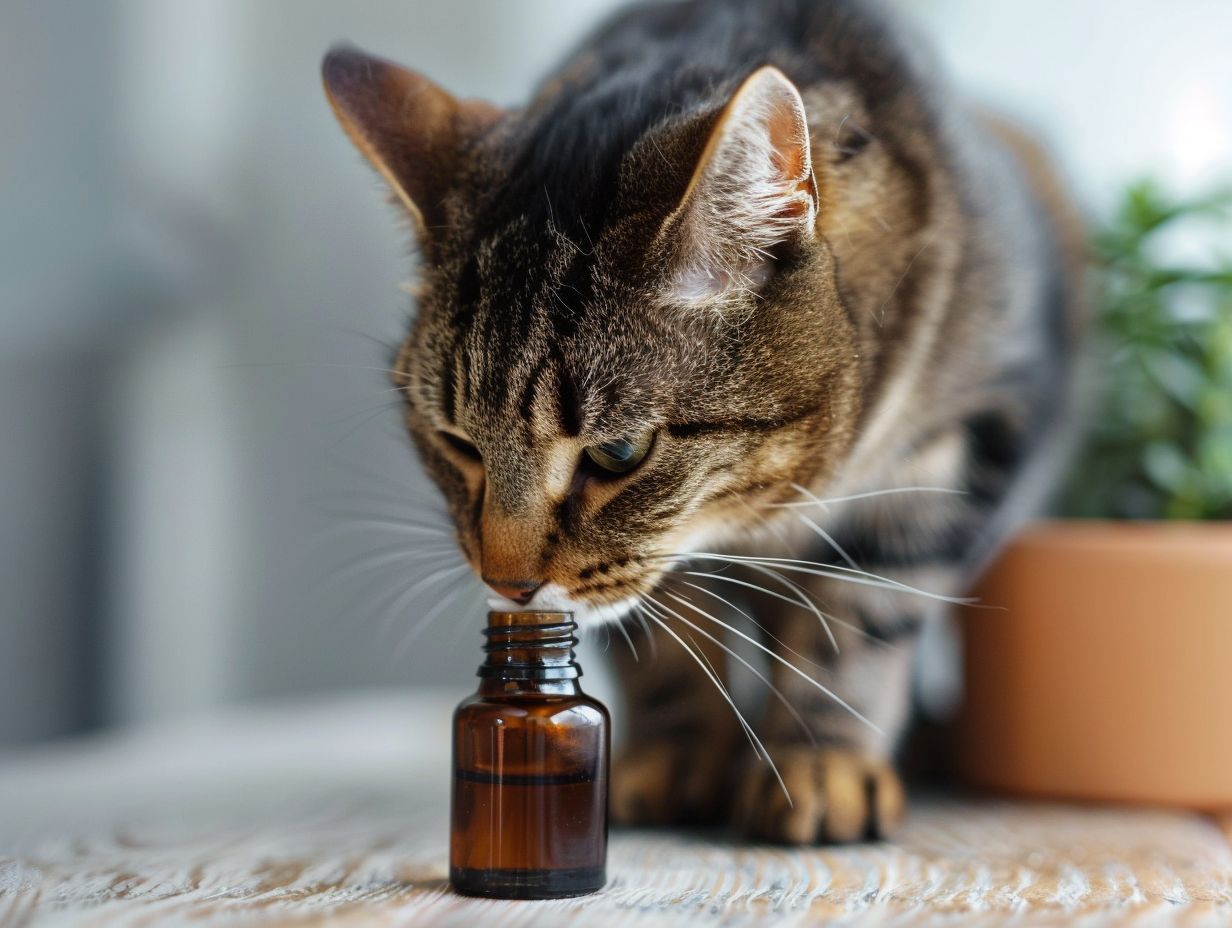
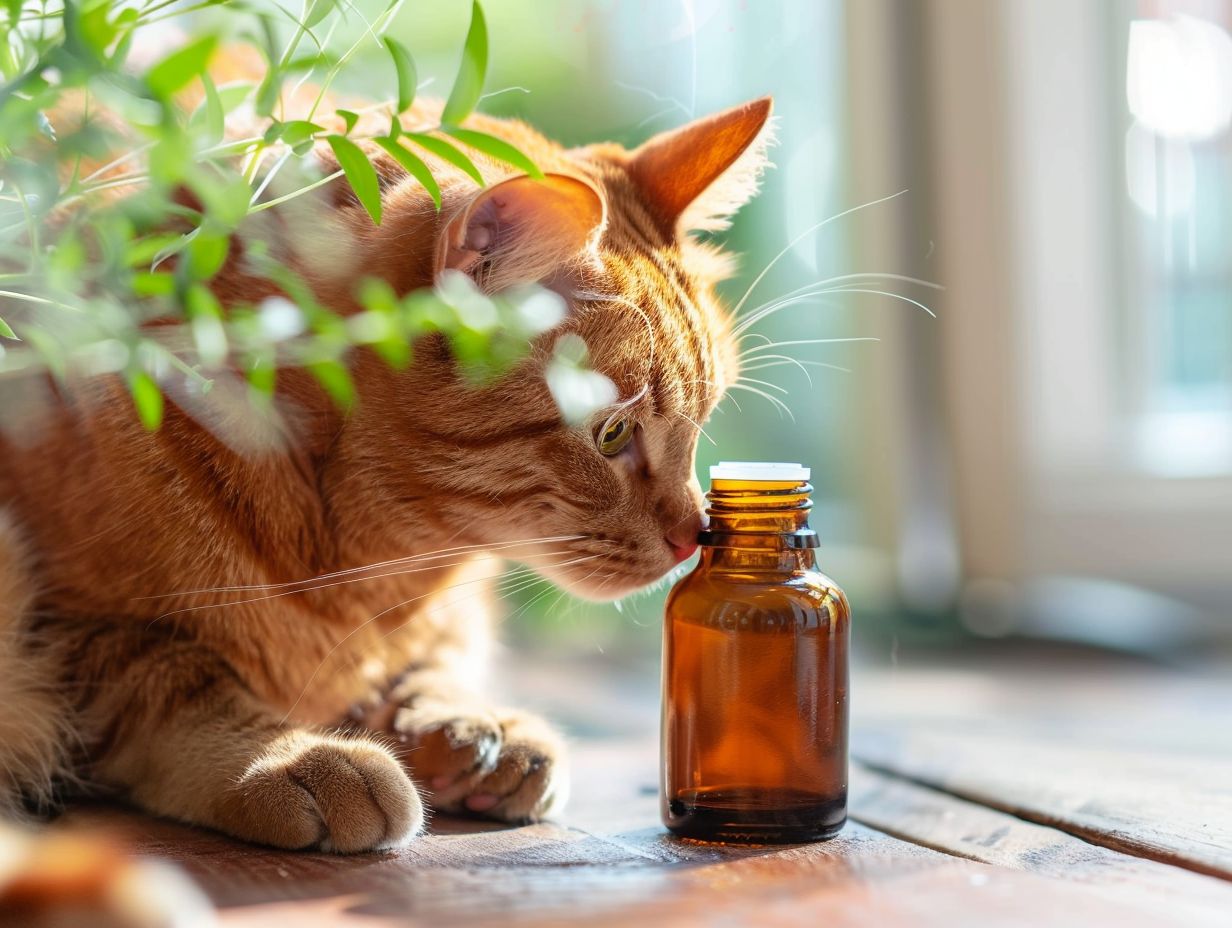


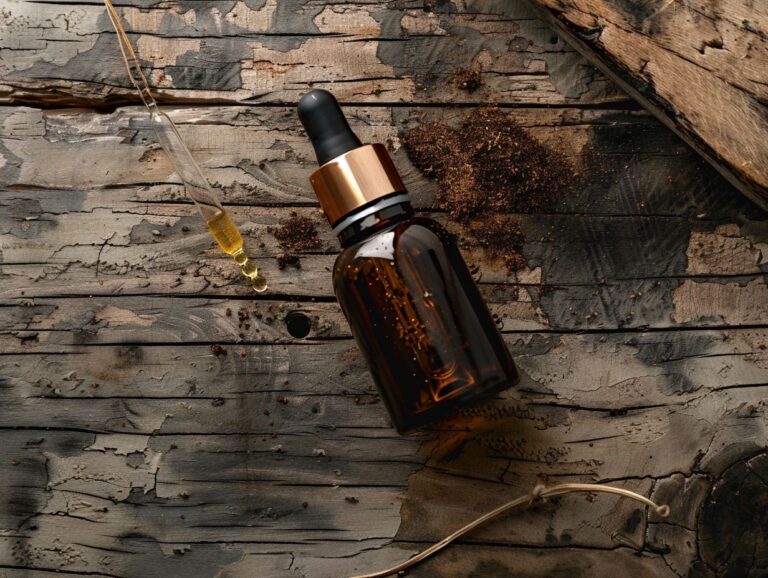


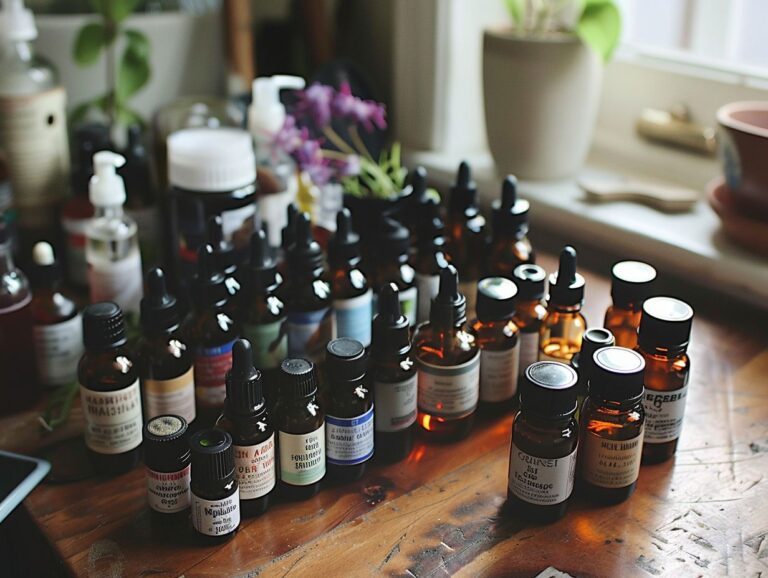
2 Comments